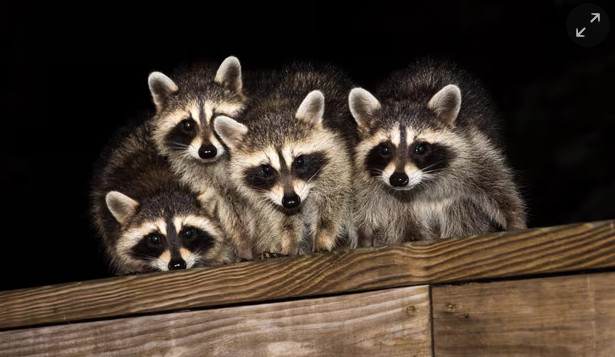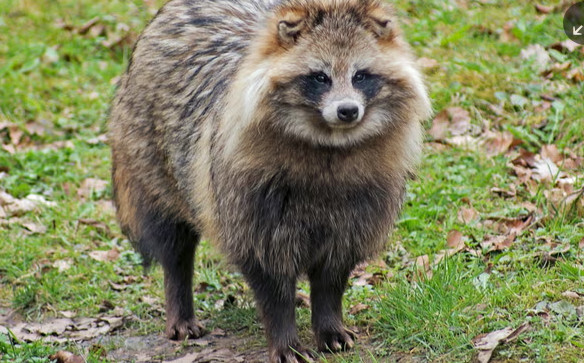
Tokyo Battles Surge of Destructive Raccoons That Went from Pet to Pest
🦝 A Growing Menace in the Capital
🚨 Raccoon Invasion
Tokyo, having successfully tackled its population of giant, ravenous crows, now faces an even tougher challenge: controlling the surge of North American raccoons. Over the past decade, the number of raccoons caught in the city has increased fivefold, causing significant concern about the damage these invasive animals are inflicting on the local ecosystem.
📞 Hotline and Traps
In response, municipalities in western Tokyo have set traps and launched hotlines for residents to report sightings of raccoons, especially those causing crop damage or entering homes. The proactive measures are part of a broader effort to curb the raccoon population and mitigate their impact on the environment.
🌍 An Invasive Species
🐾 Not Native to Japan
Raccoons are not native to Japan. They are listed among 156 invasive alien species by the environment ministry, alongside black bass, fire ants, and snapping turtles. The raccoon population soared after pets were abandoned or escaped, leading to their proliferation in the wild.
📺 Popularity Fueled by Anime
The surge in raccoon imports in the 1970s is attributed to the popularity of the TV anime series Rascal the Raccoon. This cultural phenomenon led many to adopt raccoons as pets, but when the reality of keeping them set in, many were released into the wild, where they quickly adapted and bred prolifically.
🌾 Ecological and Economic Impact
🚜 Crop Damage and Ecosystem Disruption
Raccoons are causing widespread damage in hilly areas on the western fringes of metropolitan Tokyo. They have become notorious for raiding crops, damaging infrastructure, and even preying on endangered species like the Tokyo salamander. In fiscal year 2022, the damage caused by raccoons amounted to ¥450 million ($2.8 million), primarily affecting fruit, vegetables, and livestock.
🌱 Challenges in Control
Despite efforts to control the raccoon population, authorities face significant challenges. Raccoons are prodigious breeders and adapt quickly to new environments. An official from the Mainichi Shimbun reported that traps are often broken by desperate raccoons, and only a fraction of the animals are actually caught, making it difficult to gauge their full range.
🗺️ Nationwide Issue
🏞️ Beyond Tokyo
The raccoon problem is not confined to Tokyo. Complaints about raccoon damage have been reported in almost all of Japan’s 47 prefectures. In Niigata, on the Japan Sea coast, raccoon captures have risen sharply since 2018. In Hokkaido, the northernmost prefecture, raccoons have caused millions of yen in agricultural damage since the late 1970s.
📊 Statistics and Reports
📈 Rising Numbers
In Tokyo alone, 1,282 raccoons were captured in the fiscal year ending in April 2023, compared to just 259 a decade earlier. This sharp increase reflects the growing challenge faced by local authorities in managing the invasive species.
🐸 Endangered Species at Risk
The Mainichi also reported that raccoons are preying on the endangered Tokyo salamander, contributing to its risk of extinction. This highlights the broader ecological impact of the raccoon invasion beyond just economic damage.
🛠️ Efforts and Solutions
🪤 Limited Success
The measures introduced so far have had limited success. Despite setting traps and encouraging residents to report sightings, the raccoon population continues to grow. The adaptability and breeding prowess of raccoons make them particularly difficult to control.
🌳 Community Involvement
Increasing community involvement and awareness is crucial. Residents are encouraged to secure garbage bins, protect crops with raccoon-proof barriers, and report any sightings to local hotlines. Education campaigns can also help residents understand the importance of not keeping raccoons as pets and the ecological consequences of releasing them into the wild.
🔬 Research and Innovation
Further research into more effective control methods and innovative solutions is needed. This might include improved trap designs, better monitoring systems, and possibly biological control methods to manage the raccoon population sustainably.
🐾 Conclusion
The battle against the invasive raccoon population in Tokyo is a challenging and ongoing effort. While the city has made strides in controlling other urban pests, the adaptability and breeding capacity of raccoons present a unique problem. Continued community engagement, improved control measures, and sustained efforts are essential to mitigate the impact of these unwelcome guests and protect Japan’s ecosystems and agriculture from further harm.



















